Baseball Performance Research have emerged as a crucial discipline within sports science, aimed at enhancing the understanding of how biomechanical and physiological factors influence player performance. This field combines principles of mechanics, anatomy, and physiology to analyze and improve the techniques of baseball players, from pitching and batting to fielding and base running.
 Overview of the Significance of Biomechanics and Physiology in Baseball Performance Research
Overview of the Significance of Biomechanics and Physiology in Baseball Performance Research
Biomechanics in baseball focuses on the mechanical laws relating to the movements of players, providing insights into the optimal ways to execute various actions, such as the swing of a bat or the throw of a ball. It examines how forces interact within the body and how they can be optimized for maximum performance and minimal injury risk. For instance, studying the kinematics of a pitcher's throw helps in understanding the sequence of movements that produce the fastest and most accurate pitches while also suggesting methods to reduce the stress on the arm.
Physiology, on the other hand, pertains to the body's responses and adaptations to baseball training and play, such as muscle strength, cardiovascular endurance, and neuromuscular coordination. It assesses how different training regimens affect the body at a cellular level and how these changes can enhance overall performance and recovery. For example, understanding the aerobic and anaerobic demands of baseball allows for better-designed conditioning programs that improve players' stamina and resilience over a long season.
Brief History of Baseball Performance Research
The study of baseball performance has roots dating back to the early 20th century when coaches and players began to analyze the mechanics of pitching and hitting intuitively. However, it was not until the latter half of the century that more systematic research began to take shape. The advent of video technology allowed for detailed biomechanical studies, where movements could be captured and analyzed in detail to improve performance and understand injury mechanisms.
In the 1980s and 1990s, the incorporation of motion capture technology and the establishment of research institutions dedicated to sports science, such as the American Sports Medicine Institute, propelled the field forward. These advancements led to significant insights into pitching mechanics, hitting dynamics, and preventative measures for common injuries. Today, baseball performance research is a sophisticated arena that utilizes a range of technologies from high-speed cameras to wearable sensors and virtual reality, aiming to blend the rich traditions of the sport with scientific rigor to cultivate elite athletic performance.
Key Studies Shaping the Understanding of Baseball Biomechanics
 The Role of Upper Limb Kinetics in Batting Performance
The Role of Upper Limb Kinetics in Batting Performance
The 2015 study by Ae, K., and Koike, S. made significant strides in understanding how the kinetics of the upper limbs affect batting performance in baseball. This research focused on the detailed movements of the arms during the swing phase of batting. By analyzing high-speed video data and employing motion capture technology, the study was able to track the precise movements and forces involved in the swing.
Key findings from this research highlighted that the coordination and timing of the upper limbs significantly influence bat speed and the angle of impact with the ball. It was discovered that players who could synchronize their shoulder rotation with elbow extension typically achieved higher bat speeds and more controlled swing paths. This synchronization helps in transferring maximum energy from the body through the bat and into the ball, resulting in more powerful hits.
Additionally, the study shed light on the importance of muscular strength and flexibility in the upper limbs. Greater wrist and forearm strength were associated with improved control over the bat, allowing hitters to adjust their swings more effectively to different pitches. This research has been instrumental in developing targeted training regimens focused on enhancing the strength and coordination of the upper limbs for hitters at all levels of baseball.
 Lower Limb Kinetics and Their Impact on Baseball Batting
Lower Limb Kinetics and Their Impact on Baseball Batting
In 2018, Ae, K., Koike, S., Fujii, N., and their colleagues extended their biomechanical analysis to the lower limbs and their role in baseball batting. This study recognized that while the upper limbs are crucial for the execution of a swing, the lower limbs provide the foundational power and stability needed for effective hitting.
The research utilized similar motion capture techniques to analyze how movements and forces in the legs and feet contribute to batting performance. One of the pivotal findings was that effective weight transfer from the back leg to the front leg during a swing plays a critical role in maximizing bat speed and force. This weight transfer, combined with rotational movements of the hips, allows hitters to generate significant power from the ground up.
Furthermore, the study highlighted the importance of ankle and knee flexibility and strength. Players with greater flexibility in these areas were able to achieve more dynamic and powerful swings. As a result, conditioning programs that focus on enhancing lower limb strength, flexibility, and coordination have been recommended to improve batting performance.
Together, these studies on upper and lower limb kinetics provide a comprehensive view of the biomechanical aspects of batting in baseball. They underscore the interconnectedness of body movements and the importance of holistic training approaches that consider every element of the swing motion. These insights have not only enhanced training methods but have also informed injury prevention strategies by identifying the biomechanical stress points during batting.
The Influence of Physical Conditioning on Baseball Performance Research
 Conditioning Practices of Major League Baseball Coaches
Conditioning Practices of Major League Baseball Coaches
The study conducted by Ebben, W. P., Hintz, M. J., & Simenz, C. J. in 2005 provides an insightful analysis into the conditioning practices employed by Major League Baseball (MLB) strength and conditioning coaches. This research aimed to understand the methodologies and philosophies guiding the physical conditioning programs that MLB teams use to enhance player performance and reduce the risk of injuries.
From their survey and analysis, Ebben and colleagues found that MLB conditioning programs are highly varied but share common objectives focusing on enhancing strength, flexibility, and endurance. The study identified that strength training was a central component, with a significant emphasis on upper body strength for pitchers and lower body strength for hitters, acknowledging the different demands placed on these athletes during games. Core stability exercises were also highlighted as crucial for all players due to their role in connecting upper and lower body movements effectively.
Another key finding was the widespread incorporation of functional training exercises that mimic game-specific activities. This approach helps in improving the players' ability to perform under game conditions, enhancing muscle memory and reducing the disconnect between training exercises and actual performance on the field. The study underscored the shift from traditional weightlifting to more dynamic routines that incorporate resistance bands, medicine balls, and plyometric exercises, providing a holistic approach to player fitness and agility.
 The Effects of Medicine Ball Training vs. Weight Training: Baseball Performance Research
The Effects of Medicine Ball Training vs. Weight Training: Baseball Performance Research
The 1994 study by Newton, R. U., & McEvoy, K. I. focused on comparing the effects of medicine ball training versus weight training on baseball throwing velocity. This research is particularly significant as it addresses the practical applications of different strength training modalities in enhancing specific performance metrics in baseball, notably pitching speed.
Newton and McEvoy gathered a group of collegiate baseball players and subjected them to two distinct training programs over a significant period. One group followed a traditional weight training regimen focused on increasing overall muscle mass and strength, while the other group engaged in medicine ball exercises designed to improve explosive power and core strength.
The findings revealed that while both training methods led to improvements in throwing velocity, the group that trained with medicine balls showed a more significant increase. This was attributed to the dynamic nature of medicine ball workouts, which involve rotational movements and power generation similar to those used in pitching. These exercises help in strengthening the muscles in the core and upper body in a way that directly translates to the pitching motion, thus enhancing performance more effectively than conventional weight training.
This study has influenced conditioning coaches to integrate medicine ball exercises into their training programs as a means to develop specific skills and abilities that directly improve performance on the baseball field. It highlights the importance of selecting training methods that not only build strength and endurance but also closely replicate the movements and demands of the sport.
Advanced Techniques in Baseball Training: Baseball Performance Research
 The Science of Bat Grip and Swing Mechanics
The Science of Bat Grip and Swing Mechanics
The study by Escamilla, R. F. et al. in 2009 delves into the intricate details of bat grip and its implications for swing mechanics in baseball. This research provides a comprehensive analysis of how different grip styles can affect the biomechanics of a baseball swing, influencing both the power and accuracy of the hit.
Escamilla and his team used high-speed cameras and motion capture technology to analyze the swings of players using various grip techniques. The study categorized grips into several types, such as "standard", "overlapped", and "interlocked". The findings demonstrated that slight variations in how a player holds the bat can lead to significant differences in swing dynamics. For instance, the "interlocked" grip, where fingers are interlocked in a specific manner, was shown to provide greater wrist stability and thus more controlled swing motion.
The research further explored how these grip types affect bat speed at the point of contact, the angle of the bat, and ultimately, the trajectory of the ball. Players using a grip that allowed for greater wrist flexibility and strength were able to achieve faster bat speeds, which is critical for hitting the ball with high velocity. The study also emphasized the importance of personalized grip fitting, suggesting that players should adjust their grip based on their physical characteristics and comfort levels, potentially improving their overall batting performance.
 Analyzing the Throwing Motions of Baseball Catchers
Analyzing the Throwing Motions of Baseball Catchers
In the 2020 study by Kawabata, K. et al., the focus shifts to the defensive side of baseball, specifically analyzing the throwing motions of baseball catchers. This research is vital as it addresses the biomechanics of one of the most dynamic and crucial movements in baseball—the catcher's throw to second base in an attempt to out a runner.
Kawabata and colleagues examined three different throwing motions commonly used by catchers: the "jump throw", the "step throw", and the "transfer throw". Each technique was assessed for its efficiency in terms of speed and accuracy. The study employed a combination of video analysis and biomechanical sensors to measure variables such as arm angle, body rotation, and time taken from receiving the ball to releasing it.
The findings indicated that while the "jump throw" provided the quickest release, it often compromised accuracy due to the instability caused by the airborne phase. Conversely, the "step throw" was slower but offered greater control and accuracy, suggesting a trade-off between speed and precision. The "transfer throw" was found to be a balanced approach, providing a moderate speed of release with reliable accuracy.
These insights have significant implications for training and coaching, as they help in tailoring catcher drills to optimize both the quickness and accuracy of their throws. By understanding the mechanics behind each throwing style, coaches can better guide catchers in choosing the technique that best suits their physical capabilities and the tactical needs of the team.
Injury Prevention and Management in Baseball Performance Research
 Upper Limb Injuries: Causes and Prevention
Upper Limb Injuries: Causes and Prevention
The 2020 study by Fares, M. Y. et al. provides a detailed examination of upper limb injuries in baseball, exploring their causes and discussing effective prevention strategies. This research is particularly important because upper limb injuries are among the most common and potentially career-limiting injuries in baseball, particularly for pitchers.
Fares and his team analyzed injury data from major league players over several seasons to identify patterns and common causes of these injuries. The study found that the majority of upper limb injuries occurred due to overuse and improper mechanics. Pitchers, who frequently perform high-velocity arm actions, were found to be especially at risk.
Key preventative measures recommended by the study include proper warm-up routines, strength training focusing on the shoulder and elbow stabilizers, and limits on pitching counts, especially for younger players. The research also emphasized the importance of rest periods for pitchers to allow for adequate recovery between games or sessions.
Moreover, the study advocates for the use of biomechanical analysis to refine pitching and batting techniques, thereby reducing undue stress on the upper limbs. By implementing these strategies, teams and coaches can help minimize the risk of injury and prolong the careers of their players.
 The Link Between Body Posture and Baseball Injuries
The Link Between Body Posture and Baseball Injuries
In 2021, Saito, A. et al. explored how body posture, particularly during standing and athletic movements, correlates with injuries in baseball players. This study is significant because it shifts the focus from purely mechanical analysis of baseball activities to how a player's usual posture can influence their risk of injury.
The research focused on high thoracic kyphosis (a pronounced curve in the upper back) and backward trunk inclination as key postural factors. These were analyzed in relation to the occurrence of medial elbow injuries, which are common among pitchers and fielders due to the repetitive stress of throwing motions.
The findings from Saito and his team indicated that players with excessive thoracic kyphosis and a pronounced backward lean in their standing posture were at a higher risk of developing elbow injuries. The altered posture likely changes the biomechanics of the throwing motion, placing additional strain on the medial elbow structures.
Based on these insights, the study suggests incorporating posture assessment into regular medical check-ups for players. Additionally, it recommends posture-correcting exercises and interventions as part of the training regimen for players identified with risky postural traits. These preventative measures can help in reducing the incidence of elbow injuries by promoting a more biomechanically favorable body alignment during play.
Enhancing Baseball Skills with TopVelocity's Specialized Training Programs
TopVelocity offers a suite of specialized training programs designed to elevate the performance of baseball players across different positions. These programs, including the 2X Velocity Program for Position Players, the 2X Velocity Sub 2.0 Program for Catchers, and the GFT Hitting Program for Hitters, are engineered to enhance skills, increase velocity, and improve overall athletic performance using scientifically backed methods.
 2X Velocity Program for Position Players
2X Velocity Program for Position Players
The 2X Velocity Program for Position Players is specifically tailored to help athletes increase their throwing velocity and improve their overall athletic performance. This program is built on the foundation of biomechanics and functional strength training. It integrates high-intensity exercises with plyometrics and weight training tailored to mimic baseball-specific movements. The goal is to enhance the player's ability to generate power from the lower body through the core and into the upper body during the throwing motion, effectively increasing throw velocity and improving defensive skills.
 2X Velocity Sub 2.0 Program for Catchers
2X Velocity Sub 2.0 Program for Catchers
The 2X Velocity Sub 2.0 Program for Catchers is designed to drastically improve the speed and accuracy of a catcher's throw to second base, aiming to achieve a "pop time" (the time from the moment the ball hits the catcher's glove to the moment it reaches the glove of the infielder at second base) of under 2.0 seconds. This elite program emphasizes rapid force development and explosive strength, incorporating advanced throwing mechanics, footwork drills, and specialized resistance training. Catchers undergo rigorous training regimes that focus on quick, powerful transfers and throws, essential for controlling the game's tempo and thwarting base stealers.
 GFT Hitting Program for Hitters
GFT Hitting Program for Hitters
The GFT Hitting Program, developed for hitters, stands out by focusing on rotational power and bat speed. GFT, or Gravitational Force Training, is based on the principle of utilizing the body's natural gravitational forces to enhance muscular engagement and kinetic energy during the swing. The program includes a variety of drills that improve a player’s bat path, timing, and contact consistency. By strengthening the muscles involved in the swing and improving neuromuscular coordination, hitters can expect to see significant improvements in their batting average and power metrics.
Each of these programs from TopVelocity not only focuses on the physical aspects of baseball but also incorporates strategies to enhance mental toughness and game-day performance. By leveraging advanced training techniques and comprehensive support materials, TopVelocity programs are designed to help players reach new heights in their baseball careers.
For more exclusive content visit TopVelocity Patreon!
Reference: Baseball Performance Research
Ae, K., & Koike, S. (2015). Kinetic analysis of the upper limbs in baseball tee-batting under low hitting point height condition. In ISBS-Conference Proceedings Archive.
Ae, K., Koike, S., Fujii, N., Ae, M., Kawamura, T., & Kanahori, T. (2018). A comparison of kinetics in the lower limbs between baseball tee and pitched ball batting. Human Movement Science, 61, 126-134.
Avina, A. (2020). Effects of Pelvic Rotation, Trunk Rotation, Ground Reaction Force on Bat Speed in Collegiate Baseball Hitters.
Cook, E. E., Gray, V. L., Savinar-Nogue, E., & Medeiros, J. (1987). Shoulder antagonistic strength ratios: a comparison between college-level baseball pitchers and nonpitchers. Journal of Orthopaedic & Sports Physical Therapy, 8(9), 451-461.
Ebben, W. P., Hintz, M. J., & Simenz, C. J. (2005). Strength and conditioning practices of Major League Baseball strength and conditioning coaches. The Journal of Strength & Conditioning Research, 19(3), 538-546.
Escamilla, R. F., Fleisig, G. S., DeRenne, C., Taylor, M. K., Moorman, C. T., Imamura, R., ... & Andrews, J. R. (2009). Effects of bat grip on baseball hitting kinematics. Journal of applied biomechanics, 25(3), 203-209.
Fares, M. Y., Salhab, H. A., Khachfe, H. H., Kane, L., Fares, Y., Fares, J., & Abboud, J. A. (2020). Upper limb injuries in major league baseball. Physical therapy in sport, 41, 49-54.
Fleisig, G. S., Hsu, W. K., Fortenbaugh, D., Cordover, A., & Press, J. M. (2013). Trunk axial rotation in baseball pitching and batting. Sports biomechanics, 12(4), 324-333.
Ghorbani, S., & Bund, A. (2017). Throwing skills: Analysis of movement phases in early motor learning. Perceptual and motor skills, 124(2), 502-513.
Inkster, B., Murphy, A., Bower, R., & Watsford, M. (2011). Differences in the kinematics of the baseball swing between hitters of varying skill. Medicine and science in sports and exercise, 43(6), 1050-1054.
Kawabata, K., Urata, T., Fukuda, K., & Tanabe, S. (2020). Time analysis of throwing motions to second base by baseball catchers: Comparison of three throwing motions. International Journal of Sports Science & Coaching, 15(5-6), 677-684.
Kidokoro, S., Matsuzaki, Y., & Akagi, R. (2019). Acceptable timing error at ball-bat impact for different pitches and its implications for baseball skills. Human Movement Science, 66, 554-563.
Laudner, K. G., Stanek, J. M., & Meister, K. (2007). Differences in scapular upward rotation between baseball pitchers and position players. The American journal of sports medicine, 35(12), 2091-2095.
Laughlin, W. A., Fleisig, G. S., Aune, K. T., & Diffendaffer, A. Z. (2016). The effects of baseball bat mass properties on swing mechanics, ground reaction forces, and swing timing. Sports biomechanics, 15(1), 36-47.
Mehta, S. (2017). Investigating the relationship between workload and throwing injury in elite, baseball athletes. Physical Therapy in Sport, 28, e3-e4.
Nakamoto, H., & Mori, S. (2008). Sport-specific decision-making in a Go/NoGo reaction task: difference among nonathletes and baseball and basketball players. Perceptual and motor skills, 106(1), 163-170.
Newton, R. U., & McEvoy, K. I. (1994). Baseball throwing velocity: A comparison of medicine ball training and weight training. The Journal of Strength & Conditioning Research, 8(3), 198-203.
Punchihewa, N. G., Yamako, G., Fukao, Y., & Chosa, E. (2019). Identification of key events in baseball hitting using inertial measurement units. Journal of biomechanics, 87, 157-160.
Rhea, M. R., Oliverson, J. R., Marshall, G., Peterson, M. D., Kenn, J. G., & Ayllón, F. N. (2008). Noncompatibility of power and endurance training among college baseball players. The Journal of Strength & Conditioning Research, 22(1), 230-234.
Saito, A., Okada, K., Sato, H., Shibata, K., & Kamata, T. (2021). High thoracic kyphosis and backward trunk inclination angles in the single-leg standing position associate with medial elbow injuries in youth baseball players: a cross-sectional study. Journal of Sport Rehabilitation, 30(5), 786-793.
Sakata, J., Nakamura, E., Suzukawa, M., Akaike, A., & Shimizu, K. (2017). Physical risk factors for a medial elbow injury in junior baseball players: a prospective cohort study of 353 players. The American journal of sports medicine, 45(1), 135-143.
Scher, S., Anderson, K., Weber, N., Bajorek, J., Rand, K., & Bey, M. J. (2010). Associations among hip and shoulder range of motion and shoulder injury in professional baseball players. Journal of athletic training, 45(2), 191-197.
Shitara, H., Tajika, T., Kuboi, T., Ichinose, T., Sasaki, T., Hamano, N., ... & Chikuda, H. (2021). Ankle dorsiflexion deficit in the back leg is a risk factor for shoulder and elbow injuries in young baseball players. Scientific Reports, 11(1), 5500.
Spaniol, F. J. (2009). Baseball athletic test: A baseball-specific test battery. Strength & Conditioning Journal, 31(2), 26-29.
Szymanski, D. J., McIntyre, J. S., Szymanski, J. M., Bradford, T. J., Schade, R. L., Madsen, N. H., & Pascoe, D. D. (2007). Effect of torso rotational strength on angular hip, angular shoulder, and linear bat velocities of high school baseball players. The Journal of Strength & Conditioning Research, 21(4), 1117-1125.
Taniyama, D., Matsuno, J., Yoshida, K., Pyle, B., & Nyland, J. (2021). Rotational Medicine Ball Throw Velocity Relates to NCAA Division III College Baseball Player Bat Swing, Batted Baseball, and Pitching Velocity. Journal of Strength and Conditioning Research, 35(12), 3414-3419.
Zipser, M. C., Plummer, H. A., Kindstrand, N., Sum, J. C., Li, B., & Michener, L. A. (2021). Hip abduction strength: relationship to trunk and lower extremity motion during a single-leg step-down task in professional baseball players. International Journal of Sports Physical Therapy, 16(2), 342.


 The Role of Upper Limb Kinetics in Batting Performance
The Role of Upper Limb Kinetics in Batting Performance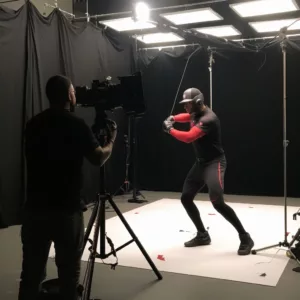 Lower Limb Kinetics and Their Impact on Baseball Batting
Lower Limb Kinetics and Their Impact on Baseball Batting Conditioning Practices of Major League Baseball Coaches
Conditioning Practices of Major League Baseball Coaches The Effects of Medicine Ball Training vs. Weight Training: Baseball Performance Research
The Effects of Medicine Ball Training vs. Weight Training: Baseball Performance Research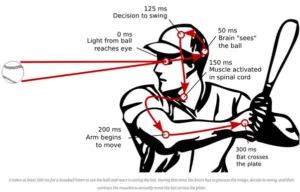 The Science of Bat Grip and Swing Mechanics
The Science of Bat Grip and Swing Mechanics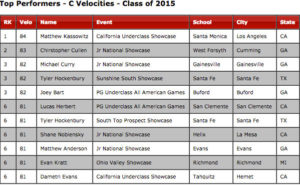 Analyzing the Throwing Motions of Baseball Catchers
Analyzing the Throwing Motions of Baseball Catchers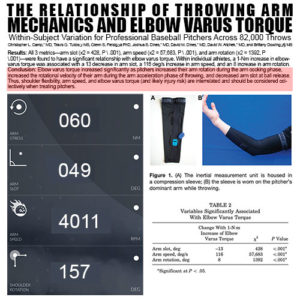 Upper Limb Injuries: Causes and Prevention
Upper Limb Injuries: Causes and Prevention The Link Between Body Posture and Baseball Injuries
The Link Between Body Posture and Baseball Injuries 2X Velocity Program for Position Players
2X Velocity Program for Position Players
 2X Velocity Sub 2.0 Program for Catchers
2X Velocity Sub 2.0 Program for Catchers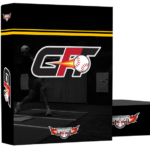 GFT Hitting Program for Hitters
GFT Hitting Program for Hitters
